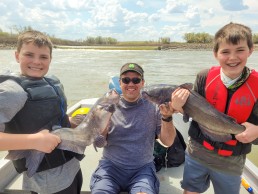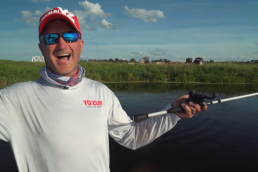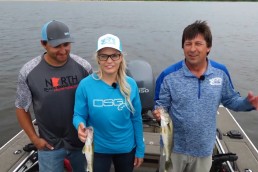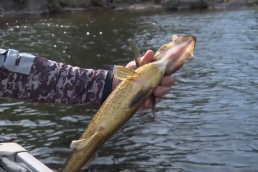Breaking Down a River Old-School Style
SHARE THIS POST
These days, when we discuss breaking down new sections of river, we talk about utilizing everything available via technology. While I highly recommend this and have written about it many times, I want to back up a step and talk about truly learning a river.
When I started out over two decades ago, I was armed with a 14-foot boat powered by a 15-horse motor equipped with a Vexilar flasher. It was clear that I was not going to get anywhere fast with limited fishing time after work using a slow boat. Looking back, I was lucky, because this handicap forced me to concentrate on small sections of river and learn every inch of them.
I spent the first few years of my catfishing in about a four-mile section of Red River. Using the flasher, I learned and remembered the heads and backs of holes and where the breaklines to the bank were. For pure simplicity, I fished a lot of snag piles back then. Some of the spots I found way back then are still go-to spots today.
I had the conversation with my now 13-year-old a couple years back about when he starts going out on his own with a boat. I told him I was going to break that old boat out of mothballs for him. He asked me if I was going to put a new Humminbird on it for him. I said yes, but only with 2D sonar.
He was stunned that we have all this tech available, and yet I wouldn’t let him use it. I told him about how I learned it little by little with a flasher, and that it forced me to catch fish where many wouldn’t, purely because of the lack of technology and ability to drive anywhere fast. I said it will be harder fishing than you are used to, but you will learn and understand things better in all situations because you will know how to adapt.
Lastly, I told him that he is a huge step ahead, because he has fished with me his whole life and seen many of the spots I like to fish. I was blind going in when I started: I had a boat, a flasher and a river. I didn’t have a short lifetime of seeing the spots of a river rat.
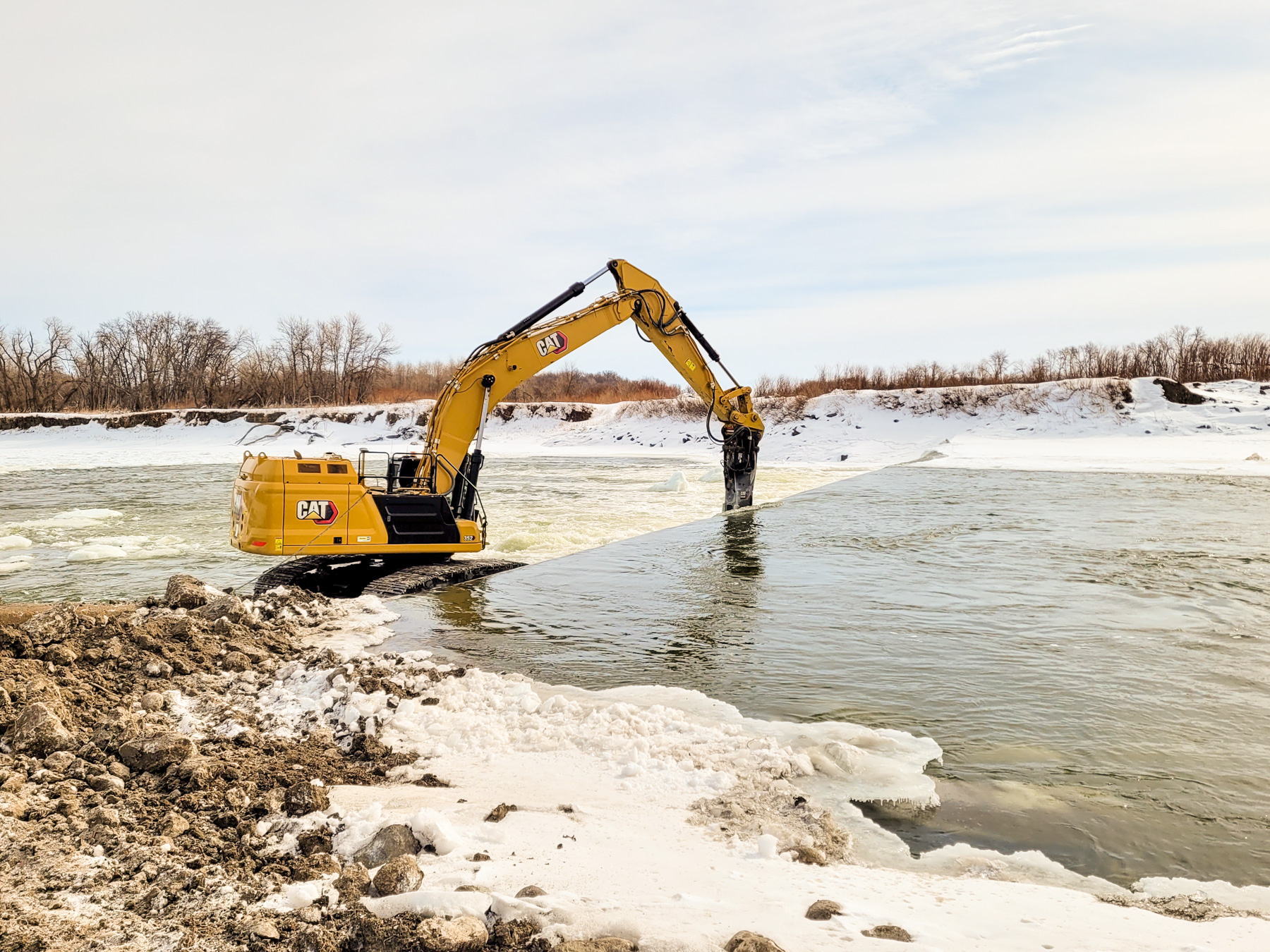
Learning in the 2020s
For simplicity, we will consider the following based on normal-flow summer conditions.
I told you how I did it over 20 years ago, but how will you do it now in 2023? That is kind of a loaded question considering all the different levels of technology available. Let’s keep it to the level of an angler who has a full-time job and can maybe fish one or two days per week at best. Because technology is now fairly inexpensive compared to even ten years ago, we will assume that you at least have side imaging and the ability to make maps.
Are you enjoying this post?
You can be among the first to get the latest info on where to go, what to use and how to use it!
To start, I would find a 2- to 4-mile stretch of river to start in. Within that, I might even try to break out a half-mile to mile section to concentrate on within a given outing. I would look at outside bends for holes and easy things to identify such as snag piles.
Once I chose my small section of river, I would start by fishing the visible snag piles and the heads of the holes on outside bends. In a mile of river, there should be enough of those structures to keep you busy for hours. If the fish are biting in those areas, keep fishing them, but don’t get caught in a rut. If you are an hour in and have caught no fish, keep looking.
This is when you have a couple more options. You can extend your river range to another mile and keep looking for fresh, easy spots, or you can put in some homework and fine-tune the section you have been working.
To do this, start looking for smaller holes near the easy-to-find ones. If you have even basic electronics, try to locate some underwater structure such as root balls or trees.
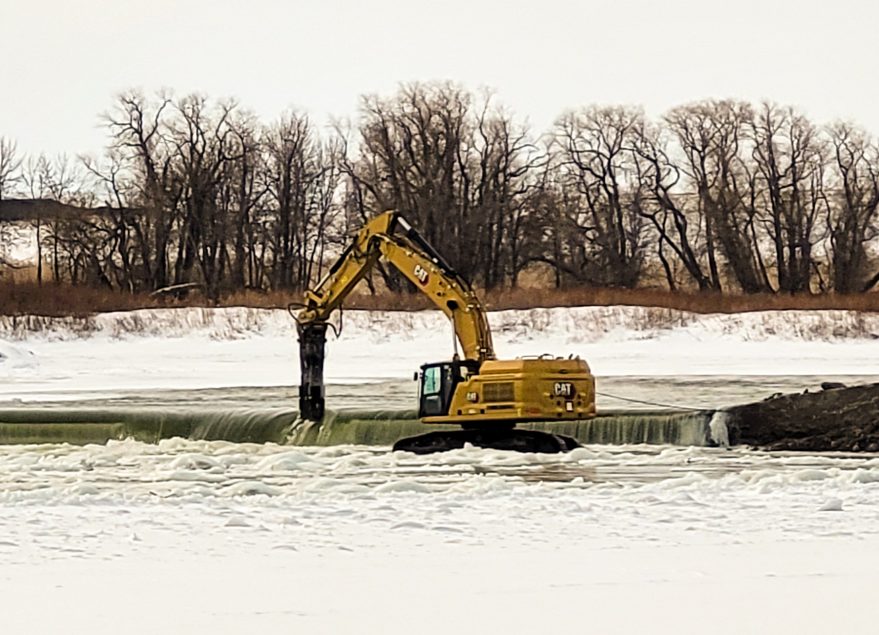
Expanding your range
I mentioned before to not get tied down in a short list of spots that have produced before. Some spots will always produce, but it is always a good idea to expand your horizons at least once every time out. Make it a point to identify a potential spot and fish it to see if it is indeed a fish-holding spot. If you fish two times per week and try a new spot each time with even 50 percent success, by the end of a northern summer, you will have 12 or more new spots in your arsenal. As you expand more miles of river over a couple years, you will find that you have more spots than you can fish in a week. Then you can start to fine-tune as to what conditions certain spots produce better or worse. This exercise will make you a much more effective and consistent catfish angler.
After guiding for 15 years and being on the water every day, I have literally hundreds of spots. Even so, I try to find at least two new spots per week. Some work and some don’t, but the point is, I am always trying to add more real estate.
In 2022, I was traveling to a not-as-fished section of river and happened to notice a small tree limb sticking up in the middle of the river. I looked at my map to discover a sandbar hole I had never noticed before. I stopped to fish it and maybe get a new spot. What I got was such a good spot that I spent some time over the next few days investigating the half-mile section of river. I found three more spots just like it that became go-to spots for the remainder of the season. They are now on the permanent list to be fished as needed. Armed with that knowledge of this new area, I will continue to search that area for even more similar spots.
You can’t learn an entire river overnight. To truly learn and understand it takes a lifetime. Don’t get overwhelmed, but rather take time to have fun and try to learn it in short bursts. Of course, time on the water is the best teacher, and the more time you spend, the faster you will break it down and learn it.
MWO
SHARE THIS POST
You may also like...
Did you enjoy this post?
You can be among the first to get the latest info on where to go, what to use and how to use it!
Brad Durick
Captain Brad Durick is a nationally recognized catfish guide, seminar speaker, and author of the books Cracking the Channel Catfish Code and Advanced Catfishing Made Easy. For more information: redrivercatfish.com or facebook.com/braddurickoutdoors.
